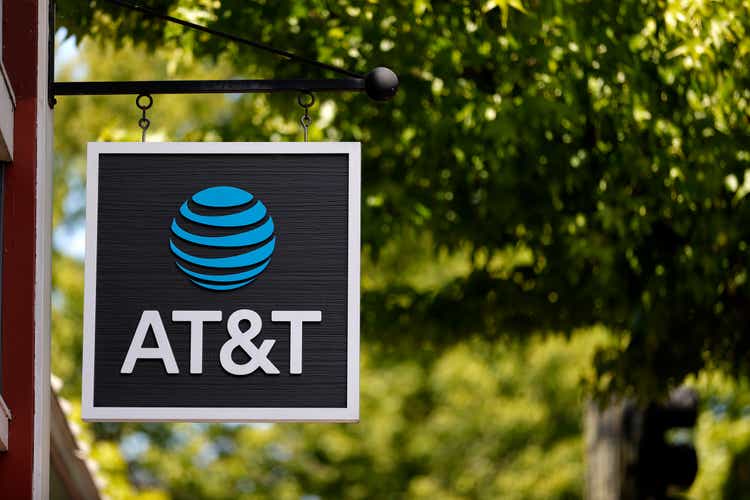Justin Sullivan/Getty Images News
AT&T Inc. (NYSE:T) has just declared its Q1 earnings as covered by Seeking Alpha here. On what appears like a good day for the market, it is not surprising that the stock is moving up pre-market (although this could change on a dime) as the company beat on EPS and revenue. This quarter is also the beginning of the new AT&T, which is an irony as the company has actually gone back to being the old AT&T instead of trying to be the jack of all trades.
We have a history of analyzing AT&T’s FCF before and after earnings, as covered in this article after 2021 Q4 results. But why FCF, you may ask?
Why cash flow over EPS
When evaluating dividend coverage, most investors and analysts tend to look at earnings per share (EPS). We prefer free cash flow as a better indicator of financial health for these reasons:
- Earnings tend to be up and down depending on rare events and write-offs.
- Earnings are more prone to GAAP-related fluctuations.
- Cash flow is king.
While we understand this quarter was not exactly the first full quarter of the new AT&T, the numbers reported by the company are still adjusted for the standalone company.
- Total shares outstanding: 7.2 billion
- Current quarterly dividend per share: $0.2775
- Quarterly FCF required to cover dividends: $1.998 billion
- FCF in Q1: $2.9 billion (According to the company’s website, “Standalone AT&T free cash flow was $2.9 billion16 for the quarter compared to $3.8 billion a year ago.”)
- Payout ratio using FCF: 68% ($1.998 billion divided by $2.9 billion)
- EPS reported: 63 cents (standalone AT&T)
- Payout ratio using EPS: 44% ($0.2775 divided by $0.63)
(Source: YCharts.com)
How do we look?
Clearly, the payout ratios show that the new dividend is not only secure but has room for higher increases than the old AT&T of the recent past, where the dividend growth rate was hovering between 1% and 2%. Again, these are early days, but it still helps to keep tabs from early on, especially given the company’s past behavior when it came to its balance sheet. We will be adding onto these numbers after the company reports earnings over the next 3 quarters so we get the full year’s picture in a cumulative view.
Back to this quarter’s results, key highlights include the following:
- Mobility showed reasonably strong growth with lower than expected postpaid churn rate of 0.79%, 700,000 postpaid phone net adds, and 113,000 prepaid net adds. This resulted in revenue being up an impressive 5.5%.
- Business wireline revenue was down as expected, but the company reported that this was more than offset by the increasing demand in Mobility and Consumer Wireline.
- From a capital allocation standpoint, the company continues its aggressive bet on 5G growth, with $24 billion capital investment set aside in 2022 and 2023. The $8 billion earmarked for dividends this year is sufficient to meet the current annual obligation of $1.11 per share. With the debt situation being addressed and 5G investment, we are optimistic of the dividend growing in the future, but for now, a 5.70% yield is significant enough even in this inflationary period.
To summarize the quarter and current forward-looking guidance, we quote the CEO from the earnings release:
“Our results, including free cash flow, are in line with our expectations toward delivering on the full-year guidance provided at our recent Analyst Day,” Stankey said in the release.”
Conclusion
We continue to hold AT&T and Warner Bros. Discovery, Inc. (WBD) at this time, but AT&T is just one strike away from being dismissed from the portfolio. As we mentioned in previous articles, if the company again shows signs of “de-worse-fying” or takes on further unreasonable debt, that will likely be it for us.
Also, speaking of WBD, the Netflix (NFLX) driven sell-off of streaming companies has taken WBD down enough for us to consider adding to our WBD position. Buried in the AT&T earnings release is this statement showing the strength of HBO Max in the same time period that Netflix lost 200,000 subscribers: “Total global HBO Max and HBO subscribers6 of 76.8 million, up 12.8 million year over year; domestic subscribers7 of 48.6 million, up 4.4 million year over year.“
To conclude, AT&T remains a hold, and WBD offers a nice buying opportunity.


Be the first to comment